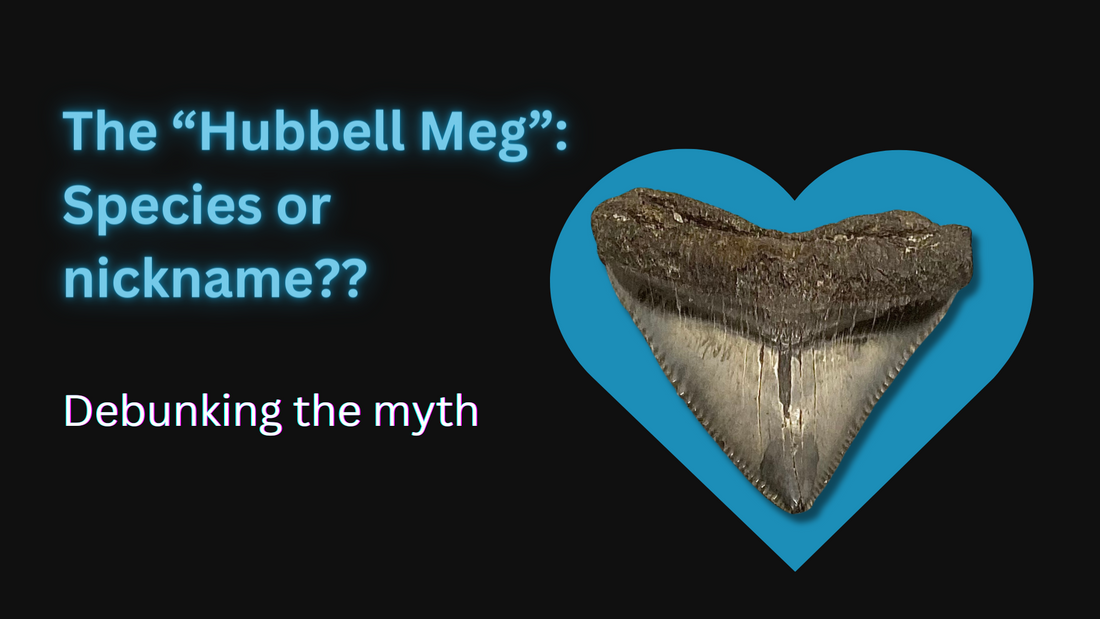Recently we've noticed an interesting trend in the collecting world. There is most definitely a desire out there to have some catchy and trendy names to enhance sales, reputations, or personal collections. Whether done for scientific acknowledgements (Otodus megalodon) or potential financial gain there have been a lot of name changes in the hobby in recent years. One "new species" in particular has really taken off and is the purpose of this blog.


"Hubbell megs" have become quite a craze over the last couple of years. Many people accurately reflect this name as merely a nickname while others have begun to incorrectly believe this is a different species of megalodon teeth. The truth and history on these is pretty simple......
"Hubbell megs" are nothing but baby/juvenile Carcharocles megalodon teeth. That's all they are and there is no mystery. These very small megs have a very unique heart-shape appearance on the upper anterior tooth positions. This shape is generally not found on adult Megalodon teeth, but is normal on baby/juvenile sharks. This same shape is also noted on some of the meg's ancestors like C. chubutensis and rarely C. angustidens.




They began to be referred to as "Hubbell megs" because Dr. Gordon Hubbell (the leading shark tooth collector in the world) maintained a large collection of megalodon teeth from the phosphate mines in Central Florida. This fossil deposit there (the famous Bone Valley Formation) was a shallow-water nursery in the Pliocene/Miocene. As such it is filled with teeth from newborn and juvenile megalodon sharks and very few adults. As can be expected this is the most prolific area in the world to find the uniquely heart-shaped baby meg upper anterior teeth. Dr. Hubbell kept these teeth separate for their interesting appearance and had 100's or 1000's of examples of these. Over time (with many people visiting his collection and being impressed by these teeth) they began to refer to these baby megs as "Hubbell megs" because Dr. Hubbell had so many of them.


We obviously have no issues with the nickname for meg teeth of this shape but we are seeing way too many people out there beginning to refer to these as a new and different species now. So we wanted to explain that these very cool and unique teeth are not a new species at all but just a certain tooth position from a certain age of megalodon. They're one of the most attractive teeth to be found, highly collectable, and we absolutely LOVE them ourselves......but please know what these are and collect/address them accordingly.
Steve Alter
megalodonteeth.com

